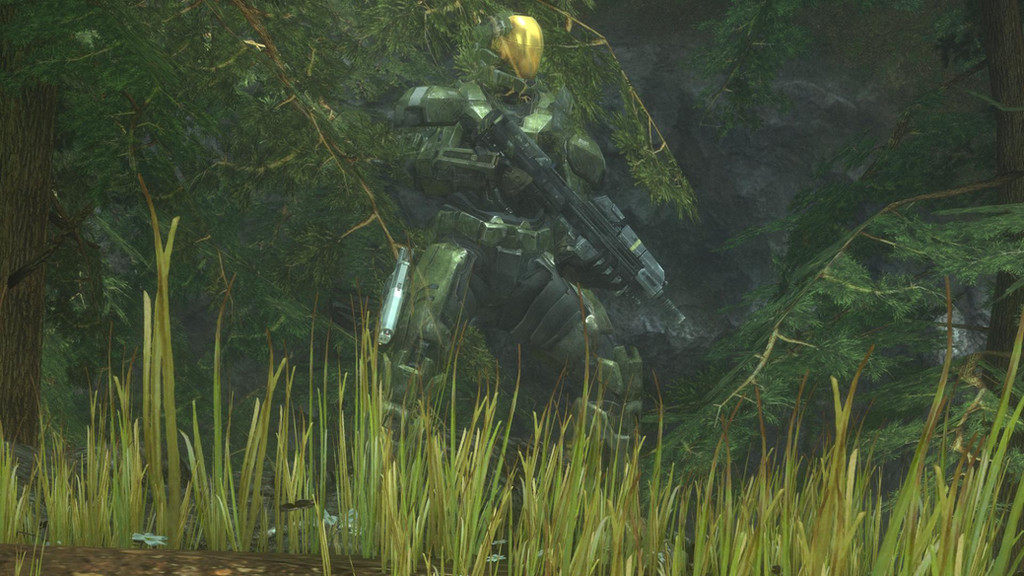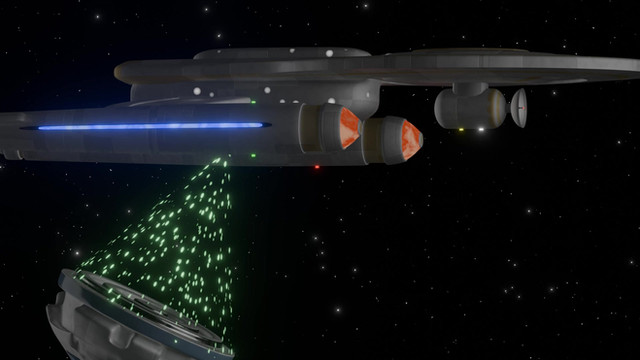HOME | DD
 Turbofurby — The SPARTAN-III Program
Turbofurby — The SPARTAN-III Program

Published: 2014-02-05 23:13:31 +0000 UTC; Views: 2319; Favourites: 20; Downloads: 0
Redirect to original
Description
The SPARTAN-III program was a secret project initiated by the Beta-5 Division of the Office of Naval Intelligence's Section-III in order to produce cheap and expendable super soldiers to fight for the survival of humanity and the United Nations Space Command's colonies.
The SPARTAN-III program was both the successor and supplement to the SPARTAN-II program. Created and engineered by Colonel James Ackerson of the Office of Naval Intelligence, the SPARTAN-III soldiers were to be the next generation of supersoldiers. Composed primarily of vengeful orphans from fallen colonies, they would be cheaper to arm, train, and produce; being chosen from a wider pool of candidates, they would also be more numerous than their SPARTAN-II predecessors. They would rely on superior battle tactics, teamwork and sheer numbers, rather than advanced technology, special augumentation, and equipment to achieve their combat effectiveness.
The SPARTAN-II program had been a dazzling success for the UNSC. Tales of Spartan super soldiers fighting off thousands of Covenant attacks had become the stuff of legend. Unfortunately, there were too few SPARTAN-IIs to turn the tide of the war. Even worse, the director for the program, Dr. Catherine Halsey, had postponed the training of new Spartan-IIs for years due to the extremely specific genetic requirements for the children to be selected.
The SPARTAN-II program also had several problems and deficiencies which overshadowed its success to ONI. Firstly, the high mortality rate of the children during augmentation was counter-productive to the purpose, drive, and ambition of the program. Next, funding the Spartan program, including their training and MJOLNIR armor, cost as much as a Battle Group, at least according to Rear Admiral Ned Rich. Third, there were far too few of them for them to turn the tide of the war. Finally, the Spartan-II program had gone public to improve morale in 2547. Even though it was a huge morale boost to the UNSC, it was a problem for most of the Office of Naval Intelligence. ONI operated in secrecy, and anything that shone light on their operations was seen as detrimental to their efforts.
The SPARTAN-IIIs were designed to be better trained, cheaper, and expendable. They would be trained in companies of 300 to 330 at a time, and then sent on suicide missions that the UNSC could not accomplish even with the elite Orbital Drop Shock Troopers. Though the casualty rates of the SPARTAN-IIIs stood at 100 percent on some missions, to ONI, all the operations were strategic successes. They were trading lives for time against the larger and technologically superior Covenant Empire. ONI hoped that in time, enough Spartans would survive to train more and more future Spartans, swelling the ranks of available super soldiers from only thirty SPARTAN-IIs in 2531 to a hundred thousand SPARTAN-IIIs within ten to twenty years.
Alpha Company:
On December 27, 2531, the first group of Spartan-IIIs, known as Alpha Company, were sent to Onyx to be trained at Camp Currahee. They were led by Kurt-051 a SPARTAN-II operating under the pseudonym "Ambrose". Of the 497 candidates who were conscripted, only 300 became Spartans. This class of Spartans all survived the augmentations and was activated in November of 2536. Their record was at first exemplary, as they saw action at the Insurrection of Mamore, the Battle of New Constantinople, and at the Bonanza Asteroid Belt. Nine months after they were activated, they were massacred in Operation: PROMETHEUS. All of the three-hundred Spartans deployed on the mission were supposedly killed. The only fire team mentioned for Alpha Company is Team Wolf Pack.
An unknown number of Alpha Company's members, deemed to match the criteria used in selecting the SPARTAN-II candidates, were hand-picked by Mendez and Kurt before Operation: PROMETHEUS and extracted from the company. These Spartans were assigned to other units, and given equipment on par with the Spartan-IIs, including the MJOLNIR armor, to make them equally efficient on the battlefield. By 2552, three of these Spartans served with Noble Team; Carter-A259, Jun-A266 and Emile-A239.
Beta Company:
Beta Company was approved right after Operation: PROMETHEUS in 2537. 418 candidates were conscripted in 2539, but only 300 became Spartans. Kurt-051 was disheartened at the loss of his first Spartans, and trained this group in unit cohesiveness along with a tougher training program. Though they were even better trained than the previous Spartans, they were similarly massacred in Operation: TORPEDO in 2545. From the entire company, only two participants survived the battle.
As with Alpha Company, several members of Beta Company deemed too valuable to be wasted on suicide missions were pulled out of the unit before Operation: TORPEDO. Some of them were assigned to "non-combat roles" as a cover, much to Ackerson's dismay, as he wanted to have all Spartans in the field. Like the personnel extracted from Alpha Company, they were issued with special equipment such as the MJOLNIR. These included SPARTAN-B312 and Catherine-B320, both of which later served with Noble Team.
Gamma Company:
Gamma Company was trained with the help of the only two Spartan-IIIs from Beta Company who survived Operation: TORPEDO: Tom-B292 and Lucy-B091. Lieutenant Commander Ambrose regarded Gamma Company to be the finest of the SPARTAN-III companies. 330 candidates were selected, on average only six years old, and at the request of Kurt, all 330 were approved. Every one of them survived the augmentation procedures. Gamma Company received deployment orders only a few weeks after the Fall of Reach, and most left Onyx before the Battle of Onyx. Only fifteen SPARTAN-IIIs remained on Onyx as they competed for top honors. Following the Battle of Onyx, seven had been killed in action. Teams Gladius and Katana were not present in the early stages of the battle, leaving only Team Saber. Team Saber was the only SPARTAN-III unit to fight alongside the SPARTAN-II unit Blue Team. With the help of their older, more experienced counterparts, they successfully fought off a Covenant attack along with destroying a Sentinel manufacturing facility. Ultimately, the surviving SPARTAN-IIIs escaped to the Shield World at the core of Onyx.
Delta Company:
Delta Company was proposed, and Camp Currahee was being prepared for their arrival when the Battle of Onyx began on October 31, 2552. With the death of Kurt-051 and the disappearances of SCPO Franklin Mendez and Dr. Catherine Halsey, as well as the immediate concerns of the Battle of Earth and the disintegration of Onyx, it is highly unlikely that Delta Company will ever be trained.
Special-Purposed:
Headhunters:
Only SPARTAN-IIIs who have survived two or more specially assigned training missions can join the "Headhunters". These two-man teams of SPARTAN-IIIs go on missions far behind enemy lines and are typically expected to die in combat. The Headhunters' existence is secret even to their peers. Once selected, candidates for the program are separated from their fellow SPARTANs and are sent to specialist training camps on the far side of Onyx. The Headhunters are comprehensively evaluated in order to ensure an effective bond between the members of each team. A contingent of six two-man teams, as well as five additional Headhunters, is maintained at all times to ensure the program's numbers remain constant should one or both members of a team be lost. The Headhunters' SPI armor is more advanced than the suits issued to most SPARTAN-IIIs, as it includes energy shielding, motion trackers, and VISR technology, and can also support a prototype active camouflage module.
Noble Team:
Noble Team is a special operations squad of the UNSC's Special Warfare Command. Unlike the Headhunter program, Noble Team is entirely separate from the SPARTAN-III program itself, being made up of SPARTAN-IIIs extracted from both Alpha and Beta Companies. Composed of five SPARTAN-IIIs and a SPARTAN-II, Noble Team employed special tactics and expensive but extremely advanced equipment such as a variant of the MJOLNIR armor, which is much more advanced than the cheaper Semi-Powered Infiltration Armor issued to most SPARTAN-IIIs. Their most notable combat deployment was during the Fall of Reach. The team was commanded by Carter-A259, with Catherine-B320 as his second in command. Although the entire unit, with the exception of Jun-A266, their sniper, was confirmed KIA, they were able to deliver a fragment of Cortana to the UNSC Pillar of Autumn, contributing to the survival of humanity.


























